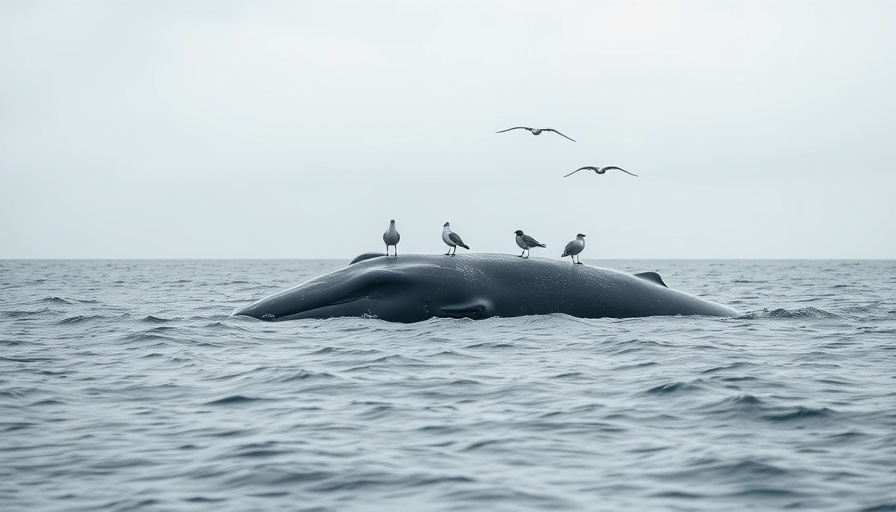
Why Are Whales Dying in the Bay? A Closer Look
The year 2025 has brought mixed emotions for whale enthusiasts in the Bay Area. The Pacific gray whale has returned in droves, with more than 30 sightings reported near the iconic Golden Gate Bridge. However, this surge comes with a tragic twist; over 25 dead whales have been found in the area, the highest number since record-keeping began in 2019. This alarming trend raises important questions about the health of whale populations and their interactions with human activities.
A New Behavioral Pattern?
Despite a decline of approximately 40% in the Pacific gray whale population from 2019 to 2023—a phenomenon referred to as an "unusual mortality event"—the increased visibility of these majestic creatures presents a complex scenario. Experts like Moe Flannery from the California Academy of Sciences note that last summer’s food scarcity may uniquely compel whales to forage in the Bay Area. With their traditional hunting grounds increasingly barren due to climate change, whales are searching for sustenance in unusual spots, potentially leading to risky encounters with vessels navigating the busy waters.
The Dangers of Urban Waters
It's alarming to consider the conditions in which these whales are foraging. As Michael Pierson, a leader in whale tours for the Oceanic Society, aptly puts it, "When these whales come in here to feed, it’s like they’re trying to have dinner in the middle of a freeway." The waters of the Bay Area are packed with ferry services, shipping lanes, and recreational vessels, all contributing to the high risk of boat strikes.
Potential Solutions and Common Ground
In response to escalating mortality rates, experts convened in Sausalito to identify gaps in research and collaborate on whale safety initiatives. Unfortunately, representatives from the local shipping industry and the San Francisco Bay Ferry were notably absent. Their inclusion could foster meaningful discussions on establishing safer navigational practices to protect these marine mammals.
Why This Matters to Local Communities
Understanding why whales seem to be choosing urban waters for their feeding is critical not just for conservationists but for everyone who cherishes the natural beauty of the Bay Area. Gray whales, remarkable for their epic migrations, provide a tangible connection to our environment and serve as indicators of ecological health. Their struggles remind us of the broader implications of human activity on wildlife—encouraging thoughtful dialogue on how we can better coexist.
Acting For Our Ocean Friends
As climate change and urbanization continue to impact marine ecosystems, it is pivotal that we stay informed and active in these discussions. Joining local conservation efforts, attending community meetings, or simply spreading awareness could contribute to making a difference for whales in our waters.
In conclusion, while the Bay Area has seen a remarkable resurgence of gray whale sightings in 2025, this increase comes with significant challenges. The collision of human activity with marine life serves as a stark reminder of the delicate balance we must maintain with our natural surroundings. The conversation doesn’t stop here—it’s up to us to ensure these magnificent beings have a safe place to thrive.
 Add Row
Add Row  Add
Add 




Write A Comment